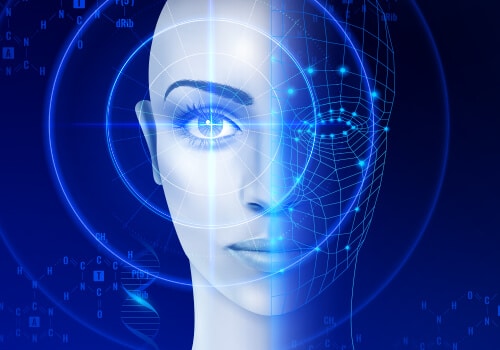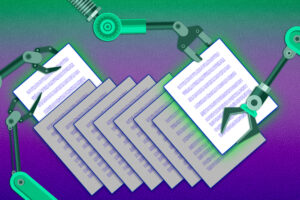An AI algorithm is only as good as the data you feed it.
It is neither a bold nor an unconventional statement. AI could have seemed rather far-fetched a couple of decades ago, but Artificial Intelligence and Machine Learning have come a really long way since then.
Computer vision helps computers understand and interpret labels and images. When you train your computer using the right kind of images datasets, it can gain the ability to detect, understand and identify various facial features, detect diseases, drive autonomous vehicles, and also save lives using multi-dimensional organ scanning.
The Computer Vision Market is predicted to reach $144.46 Billion by 2028 from a modest $7.04 Billion in 2020, growing at a CAGR of 45.64% between 2021 and 2028.
The image dataset you are feeding and training your Machine Learning and computer vision tasks are crucial to your AI project’s success. A quality dataset is quite hard to get. Using a diverse collection of images is essential to ensure robust model training and to better reflect real-world complexity.
Depending on the complexity of your project, it could take anywhere between a few days to a few weeks to get reliable and relevant datasets for computer vision purposes. A diverse range of datasets is necessary to cover various computer vision tasks and real-world scenarios. Researchers often seek a substantial dataset for research purposes to ensure comprehensive model evaluation and to support a wide array of applications.
Here, we provide you with a range (categorized for your ease) of open-source image datasets you can use right away.
Image Dataset Tasks: Classification, Segmentation, Detection, and More
Image datasets are the backbone of modern computer vision, powering a wide range of tasks that enable machines to interpret and understand visual information. Whether you’re building a model for autonomous vehicles, developing facial recognition technology, or working on medical image analysis, the right image dataset is an essential tool for success.
Image classification is one of the most fundamental computer vision tasks. In this process, a model learns to assign a label to an entire image based on its content. For example, an image classification dataset might help a model distinguish between images of cats and dogs, or identify different types of plants. This task is crucial for applications like automated photo tagging, disease diagnosis from medical images, and scene categorization benchmarks.
Object detection takes things a step further by not only identifying the presence of objects within an image but also pinpointing their locations using bounding boxes. Datasets for object detection, such as those containing annotated images with bounding boxes, are vital for applications like pedestrian detection in autonomous vehicles, security surveillance, and retail analytics. Object detection is also a key component in developing robust computer vision algorithms for real-world scenarios.
Semantic segmentation involves classifying each pixel in an image into a specific category, providing a detailed understanding of the scene. This pixel-level trimap segmentation is especially important in tasks like medical imaging, where precise delineation of organs or tumors is required, and in urban environments for autonomous driving, where distinguishing between roads, sidewalks, and vehicles is critical.
Beyond these core tasks, image datasets also support instance segmentation (differentiating between individual objects of the same class), image captioning (generating descriptive text for images), and facial recognition (identifying or verifying human faces in images). Each of these computer vision tasks relies on high-quality, annotated images to train and validate machine learning models.
By leveraging diverse and well-annotated image datasets, data scientists and machine learning practitioners can tackle a variety of computer vision challenges, from image recognition and classification tasks to complex segmentation and detection problems. The right dataset not only accelerates research and development but also ensures that computer vision systems perform accurately in real-world applications.
Comprehensive List of Image Datasets to Train Your Computer Vision Model
General:
-
ImageNet
ImageNet is a widely used dataset, and it comes with an astonishing 1.2 million images categorized into 1000 categories. This dataset is organized as per the WorldNet hierarchy and categorized into three parts – the training data, image labels, and validation data.
-
Kinetics 700
Kinetics 700 is a huge high-quality dataset with more than 650,000 clips of 700 different human action classes. Each of the class actions has about 700 video clips. The clips in the dataset have human-object and human-human interactions, which are proving to be quite helpful when recognizing human actions in videos.
-
CIFAR-10
CIFAR 10 is one of the largest computer-vision datasets boasting 60000 32 x 32 color images representing ten different classes. Each class has about 6000 images used to train computer vision algorithms and machine learning.
-
Oxford-IIIT Pet Images Dataset
The pet image dataset comprises 37 categories with 200 images per class. These images vary in scale, pose, and lighting, and are accompanied by annotations for breed, head ROI, and pixel-level trimap segmentation.
-
Google’s Open Images
With an impressive 9 million URLs, this is one of the largest image datasets on the list, containing millions of images labeled across 6,000 categories.
-
Plant Images
This compilation includes multiple image datasets featuring an impressive 1 million plant images, covering approximately 11 species.
-
LSUN
LSUN is a large-scale image dataset with millions of labeled images in various scene and object categories. The dataset includes a dedicated test set for model evaluation.
Facial Recognition:


-
Labeled Faces in the Wild
Labeled Faced in the Wild is a huge dataset containing more than 13,230 images of nearly 5,750 people detected from the internet. This dataset of faces is designed to make it easier to study unconstrained face detection.
-
CASIA WebFace
CASIA Web face is a well-designed dataset that helps machine learning and scientific research on unconstrained facial recognition. With more than 494,000 images of almost 10,000 real identities, it is ideal for face identification and verification tasks.
-
UMD Faces Dataset
UMD faces a well-annotated dataset that contains two parts – still images and video frames. The dataset has more than 367,800 face annotations and 3.7 million annotated video frames of subjects.
-
Face Mask Detection
This dataset includes 853 images categorized into three classes: “with mask,” “without mask,” and “mask worn incorrectly,” along with their bounding boxes in PASCAL VOC format.
-
FERET
The FERET (Facial Recognition Technology Database) is a comprehensive image dataset containing over 14,000 annotated images of human faces.
Handwriting Recognition:
-
MNIST Database
MNIST is a database containing samples of handwritten digits from 0 to 9, and it has 60,000 and 10,000 training and testing images. Released in 1999, MNIST makes it easier to test image processing systems in Deep Learning.
-
Artificial Characters Dataset
Artificial Characters Dataset is, as the name suggests, artificially generated data that describes the English language structure in ten capital letters. It comes with more than 6000 images.



